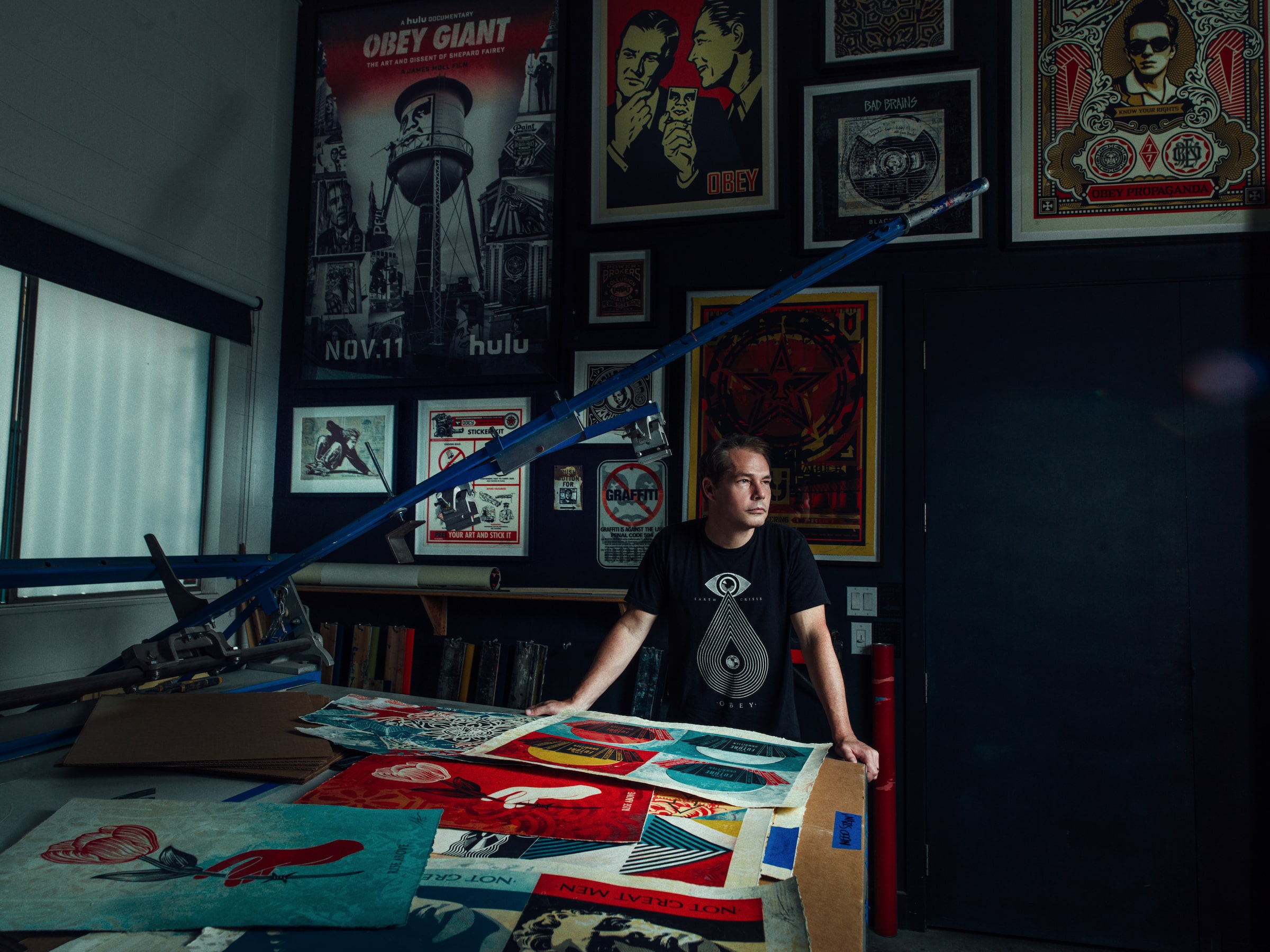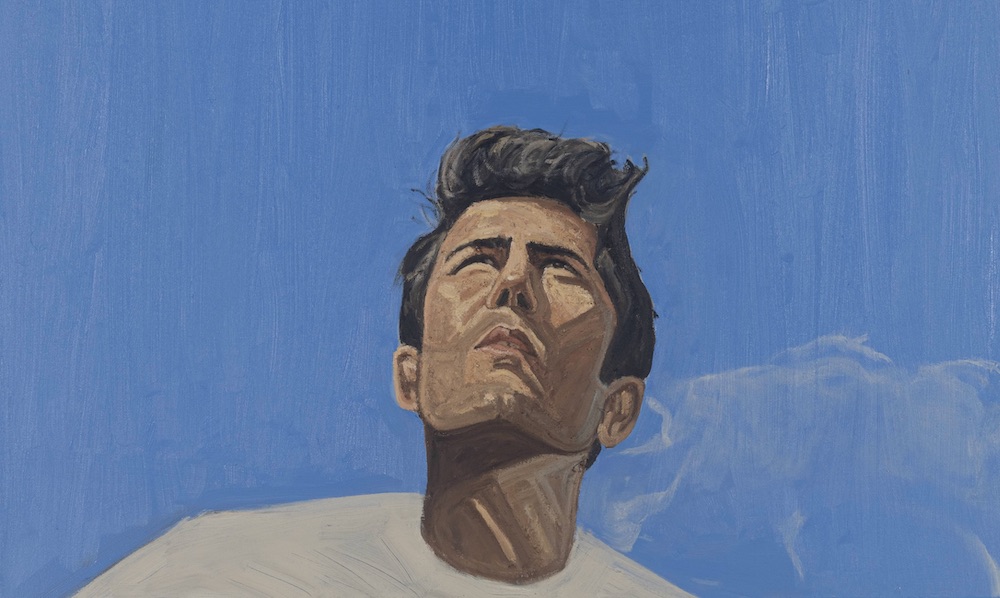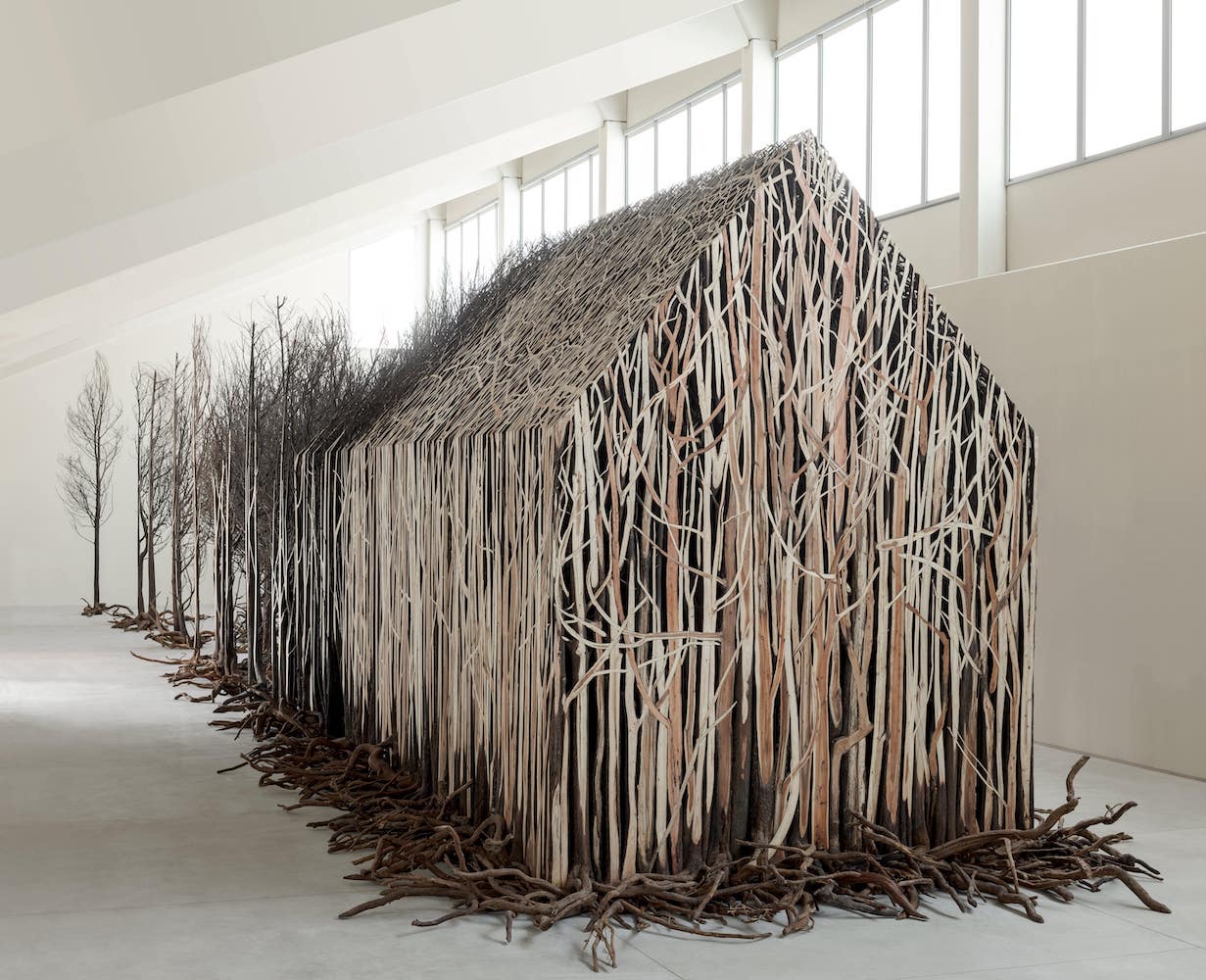Guillermo Mora (Madrid, Spain, 1980) is one of the most outstanding Spanish artists of his generation. He received a BFA from the Complutense University of Madrid and the School of the Art Institute of Chicago. Mora was featured in 100 Painters of Tomorrow by Thames & Hudson, awarded the Audemars Piguet prize in 2014, the Generaciones Prize in 2013, and received and a fellowship from the Spanish Academy in Rome in 2010.
Whitewall recently checked in with the artist, who has created a particular visual vocabulary to generate an abstract mode of communication that questions the protocols and procedures of contemporary painting.
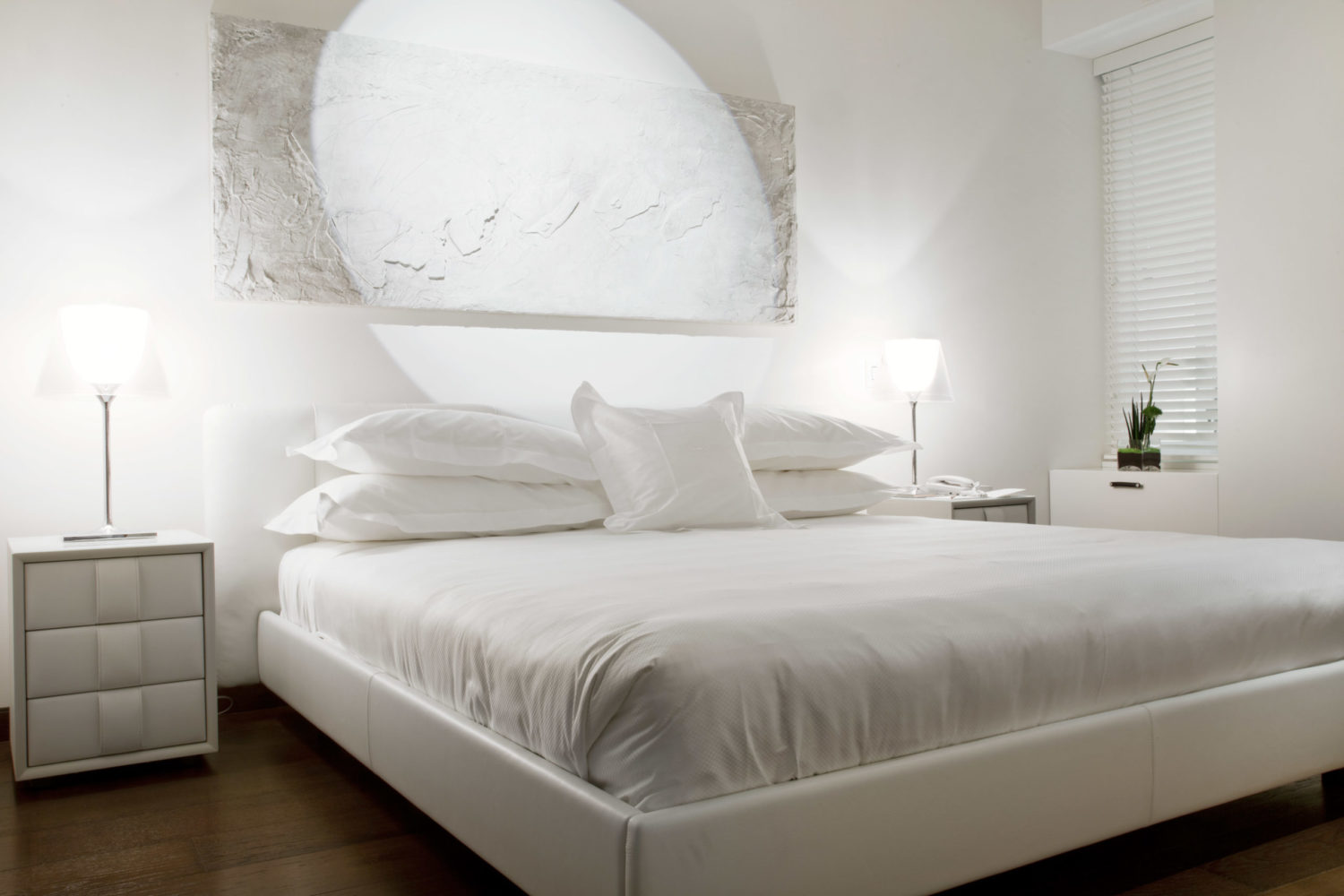
Courtesy of Magna Pars Suites.
WHITEWALL: Your work expands painting to the territories of sculpture and installation. How would you define it? Where would you say is the limit between painting and sculpture?
GUILLERMO MORA: One of my main interests is to position painting on the border with other disciplines. Borders are the places where languages mix, where differences dissipate, the place where different things bond. Borders generate questions, and this is precisely the idea of painting that I pursue.
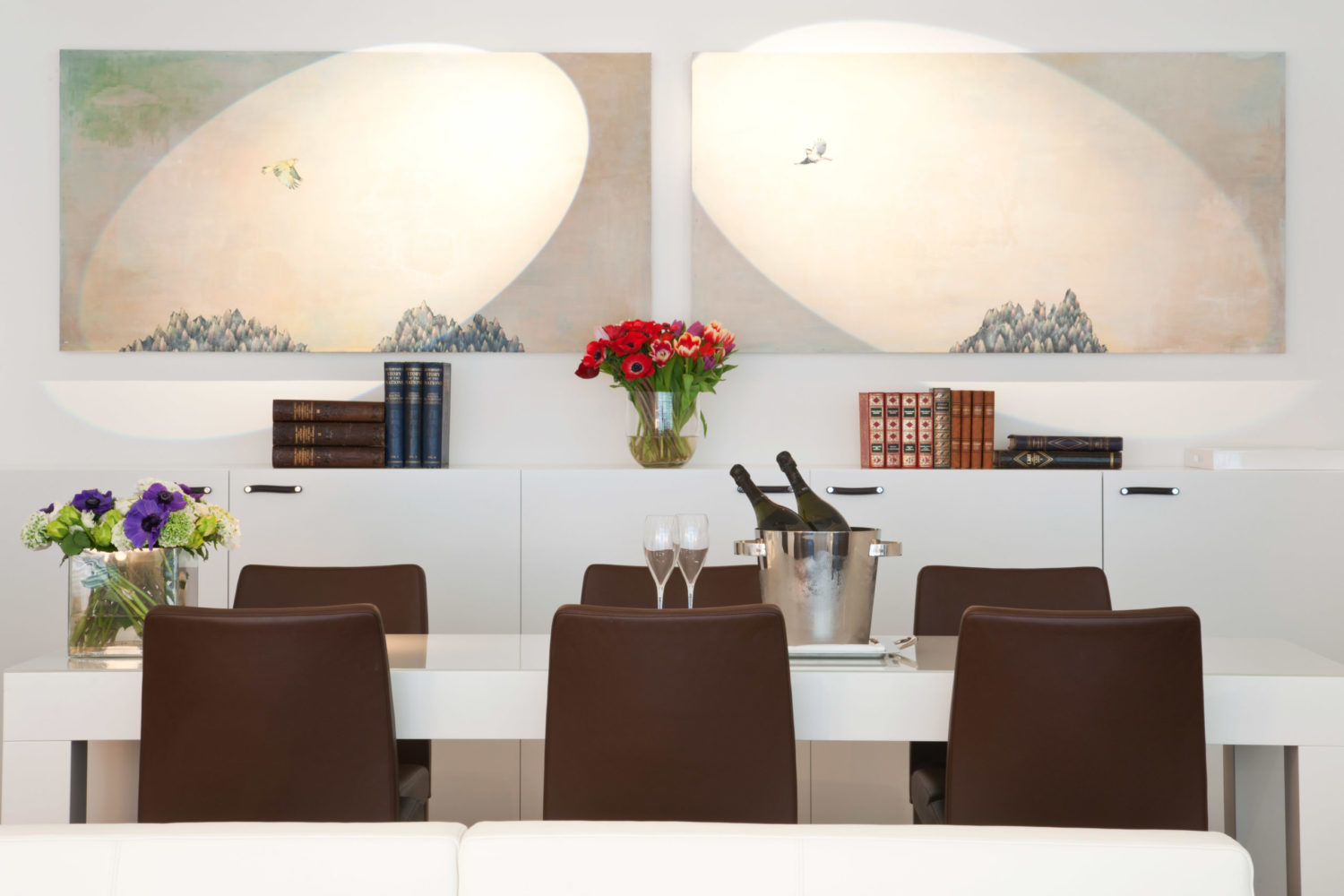
Courtesy of Magna Pars Suites.
I am not interested in the categorizations of art—nor those of life. Is it painting or sculpture? Who do you belong to? What are you? What is this? Is this it or is that? As a society we have been able to generate complex multifunctional products that are a thousand things at once. We adore these objects, they conquer, amaze and delight us, but we are still unable to internalize that one person is two or three at a time or that a work of art is also.
We have very fast minds for technology and industry but very slow to understand the new beings and artistic objects of our time. In the 21st century, the dichotomy of one “or” the other can no longer prevail. At this beginning of the century, the idea of the one “in” the other must prevail.
WW: If you don’t sell your pieces, they return to you to subject them to new processes and readings. Is this true? When does the creative process end then?
GM: Mutability is constant in many of my works. Many of my pieces are created through a transformation system that happens while they come in and out of my studio. When they return to the studio and I can work on them again, separating them into pieces or even destroying them. I believe everything in life is subject to be in a constant change, thinking something can be eternal is somewhat obsolete. We humans are constantly changing, physically and mentally, why shouldn’t paint evolve too?
WW: When working, do you follow any routine in the study? What inspires you to create your works?
GM: I am a very disciplined and methodical person. I get up early, at 7 in the morning, do some exercise and walk to the studio with my dog. While I walk, I plan all my day. Before painting I give myself 20 minutes with a tea, to disconnect from the real life and plunge into the reality of my studio. I work from 10am to 7pm and repeat this routine daily.
My inspiration comes from my personal life experiences that I later formalize into abstraction.
WW: What are your next goals at a professional level?
GM: It may seem small or unambitious, but my only goal is to be able to live as an artist all my life. It´s difficult to be a successful painter, but it’s even more difficult to have a long and stable career.
WW: Do you have plans to participate in an international exhibition or fair this year?
GM: Next July I will be part of a group exhibition, “The Rest”, along with Irma Álvarez-Laviada, Miren Doiz, Esther Gatón, and Wilfredo Prieto, shown at the Museum of the University of Navarra and curated by five students from the University Master’s in Curatorial Studies.
Sadly, most of the fairs I was going to participate have been cancelled or postponed due to the Coronavirus crisis…
But if I look on the bright side, I will have a solo exhibition in Sala Alcalá 31 in Madrid, within the 2021/22 program. It will be a great challenge that makes me enormously happy.
WW: How do you see the Spanish artistic scene? And how do you think the crisis of the Covid-19 pandemic will affect the art world?
GM: The Spanish art scene is inherently unstable. Coronavirus has just added more instability to everything. We all know we are all going to face hard times, I think this crisis has marked a breaking point—the world has changed.
Outside of economics, I would like focus on what has been occurring during the quarantine, and that is the hyper-digitization of art from all its aspects. Virtual visits in museums and exhibitions, online view rooms in art fairs…
It somehow worries me that the audience is getting used to seeing artworks through screens, where the experience is lost, because in my opinion the screen tends to isolate us.
WW: What other contemporary Spanish artists do you recommend our readers to follow?
GM: I admire the work of artists such as Nuria Fuster (Alcoi, Valencia, 1978), Elena Bajo (Madrid, 1976), Cristina Garrido (Madrid, 1986), and Teresa Solar (Madrid, 1985), and also from the very young artists Victor Santamarina (Madrid, 1990) and Miguel Marina (Madrid, 1989).




